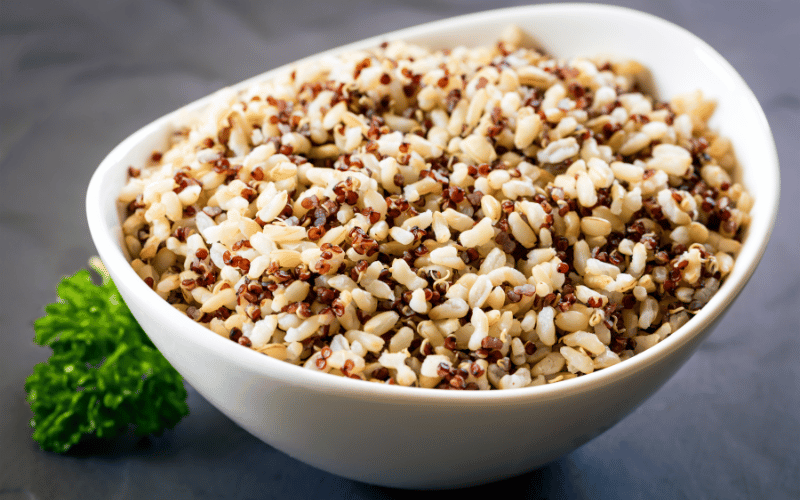Food 2: Whole Grains

Whole grains, including oats, quinoa, brown rice, and whole wheat, are integral to a diet aimed at improving insulin resistance. Unlike refined grains, whole grains retain all parts of the grain – the bran, germ, and endosperm. This means they provide more fiber, B vitamins, and important minerals like iron, magnesium, and selenium. Fiber is particularly important for insulin resistance as it helps slow the digestion of carbohydrates, reducing blood sugar spikes.
The slow and steady release of glucose into the bloodstream when consuming whole grains is vital for maintaining stable insulin levels. This attribute of whole grains can prevent the insulin peaks and troughs that exacerbate insulin resistance. Regular intake of whole grains is associated with lower fasting blood sugar levels and improved insulin sensitivity.
Adding whole grains to your diet can be both delicious and satisfying. Start your day with a bowl of oatmeal, use quinoa or brown rice as a base for lunch and dinner dishes, or choose whole-grain bread for sandwiches. Being mindful of portion sizes is key as whole grains, while healthy, are still calorie-dense.
Whole grains offer a canvas for a variety of flavors and ingredients. For example, oatmeal can be topped with berries and nuts for added nutrients, or quinoa can be tossed in a salad with vegetables and a lemon vinaigrette. Experimenting with different grains and seasonings can keep your meals exciting and nutritious.
Whole grains are a cornerstone of a diet aimed at improving insulin resistance. Their high fiber content and nutrient profile support healthy blood sugar levels and overall health. Integrating a variety of whole grains into your diet can be a delightful and beneficial journey towards better health. (2)